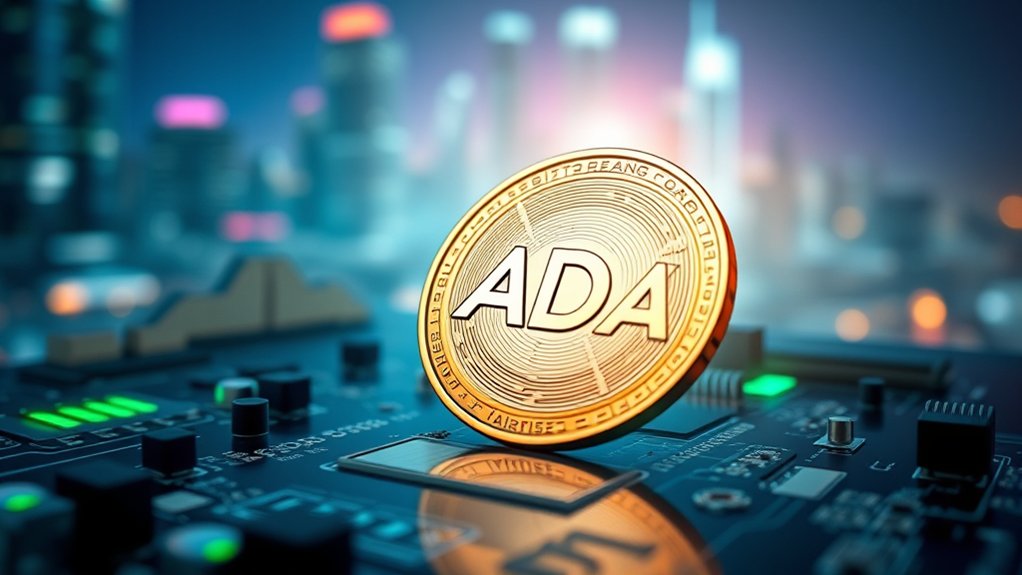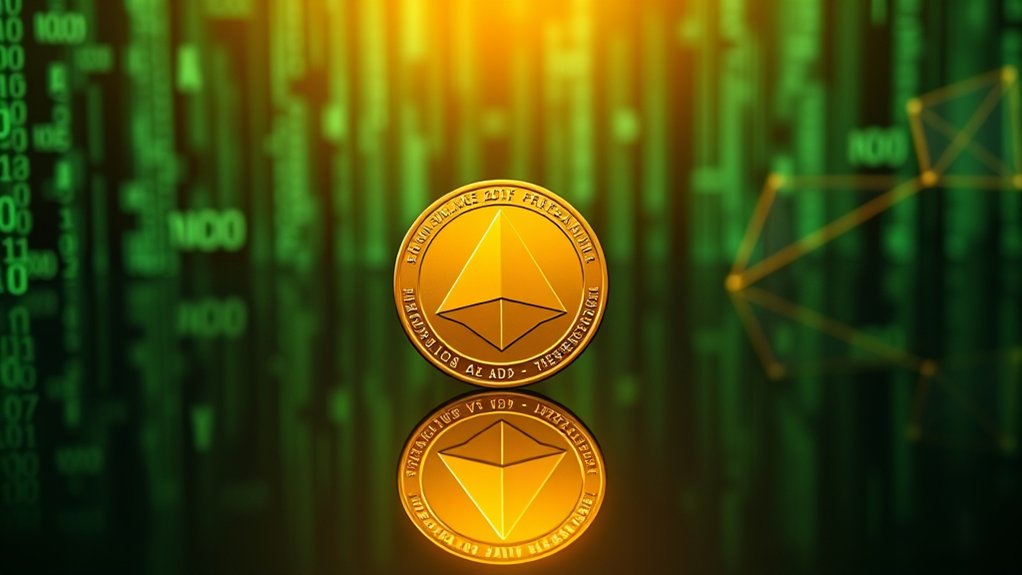ADA is the cryptocurrency that powers the Cardano blockchain. Yeah, it’s named after Ada Lovelace, the first programmer—very clever, right? With a cap at 45 billion coins, it’s got serious market ambitions. Cardano features a dual-layer system for transactions and smart contracts. Plus, it uses a more energy-efficient proof-of-stake method. Oh, and you can stake ADA for rewards. Intrigued by how it all works? Stick around for the juicy details.

When it comes to cryptocurrencies, ADA is one name that often pops up, and for good reason. This isn’t just any digital coin; it’s the lifeblood of the Cardano blockchain, which aims to be a big deal in the crypto world. Named after Ada Lovelace, often dubbed the first computer programmer, ADA is not just a name drop. With a total supply capped at 45 billion coins, and about 35.6 billion already in circulation, it’s clear this coin is on the move.
The Cardano platform operates on a dual-layer system. It’s like the fancy two-story house of blockchains. The Settlement Layer handles transactions, while the Computational Layer takes care of smart contracts. This slick setup is designed for scalability—think millions of transactions per second. Yes, you read that right. Millions. And who doesn’t want a piece of that action?
Cardano’s dual-layer system is like the two-story mansion of blockchains, built for millions of transactions per second. Who wouldn’t want in?
ADA isn’t just a pretty face; it plays a significant role in the network’s governance and functionality. Holders can stake their tokens—fancy for saying they can put their coins to work—earning rewards while helping validate transactions. It’s like getting paid for doing your chores. Furthermore, with a fixed maximum supply of ADA set at 45 billion tokens, this scarcity adds to its value proposition in the market. Additionally, Cardano’s Ouroboros Proof-of-Stake mechanism allows users to stake ADA for validation rights, promoting a more energy-efficient approach to securing the network. This is especially beneficial as it reduces the energy consumption associated with traditional mining methods.
Plus, ADA holders can delegate their tokens to staking pool operators, which is a neat way of saying they can let someone else do the heavy lifting while they reap the benefits.
In a world where energy consumption is a hot topic, Cardano’s use of the Ouroboros Proof-of-Stake consensus mechanism is a refreshing change. Unlike Ethereum’s old-school Proof-of-Work method, Cardano aims for sustainability. Less energy, more efficiency.
And let’s not forget: Cardano isn’t just sitting pretty. With plans for Ethereum compatibility and a roadmap that hints at greater decentralization, the future looks bright for ADA.
Frequently Asked Questions
How Can I Buy ADA Crypto Tokens?
Buying ADA crypto tokens? Simple enough.
First, pick a platform—Kraken, Binance.US, MoonPay, or Coinbase. Register. Yes, it’s that easy.
Choose how to pay—credit card, bank transfer, whatever floats your boat. Then, hit that “Buy Crypto” button. Easy peasy.
Just double-check those details before confirming; you don’t want to mess that up.
What Wallets Support ADA Cryptocurrency?
When it comes to wallets that support ADA cryptocurrency, choices abound.
Daedalus? Sure, if you like full-node security, but good luck with no mobile version.
Then there’s Eternl, a web and mobile superstar with multipool staking.
Exodus? It’s a multi-currency gem, and Nami’s a slick browser extension for dApps.
AdaLite? It’s simple and solid.
Just remember, pick wisely. Your crypto deserves better than a sketchy wallet.
Security is key, folks.
Is ADA Mining Possible or Not?
Nope, ADA can’t be mined. Forget those fancy mining rigs. It uses a proof-of-stake system, which means you stake your ADA instead of mining it.
So, no GPUs or ASICs required—thank goodness! You earn rewards by delegating your tokens to staking pools. It’s like passive income without the hassle of sweating over hardware.
What Are Ada’s Use Cases Beyond Transactions?
ADA isn’t just for transactions; it’s got layers.
Think decentralized apps, staking for sweet rewards, and multi-token magic.
Supply chains love it too—better tracking, lower costs, and authenticity checks.
Then there’s tokenization of real-world stuff. NFTs? Yep, those too.
And digital identity? Cardano’s on it, making self-sovereign identities a thing.
It’s like Swiss Army knife meets blockchain. Who knew a token could do so much?
It’s a blockchain buffet!
How Does ADA Compare to Other Cryptocurrencies?
ADA stands out in the crypto crowd, but not always for the right reasons.
Sure, it’s got a proof-of-stake mechanism and caps at 45 billion tokens—who doesn’t love a limit?
But compared to Ethereum? It’s still playing catch-up with smart contracts.
Market cap? A respectable $19.1 billion, but with trading volumes trailing behind big players like Solana.
Less volatile? Maybe. But can it truly compete?
Time will tell, folks.





